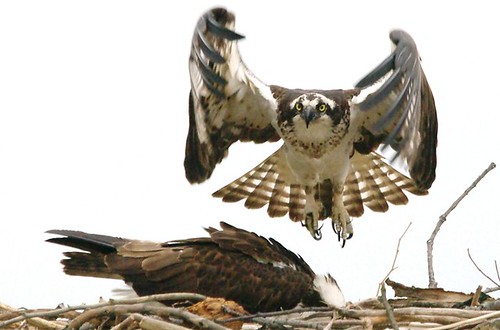Phil, our resident Osprey contributor, has really outdone himself with this photo. The bird is not only in caught in a dramatic pose, but also while carrying a branch for nest building, which helps to give the raptor a sense of scale. Notice the symmetry of the wings is almost perfect, allowing the pattern in the feathers to be shown off to its best. In fact, it’s such a great effect that it takes a moment to realize that the bird’s eyes are clearly visible and looking straight into the camera. Isolating the raptor is also an excellent framing decision, as it allows the viewer to not be distracted by objects in the background and focus all their attention on the bird. Very well done!
If you’re wondering how someone could get such amazing photographs, know that it’s a matter of two things: investing time and knowing the animal you shoot. Phil has been going to the same Osprey nest for at least five years (2013, 2012, 2011, 2010, and 2009). As well, knowing that Osprey nest in the same location over their adult breeding lifespan, helps Phil to know he can always come back year after year to this nest at Belle Haven Marina to see these birds. Knowing other behavioral traits also helps him anticipate what the birds will do, which helps gets better photos. Two simple things, but they make all the difference with wildlife photos.
